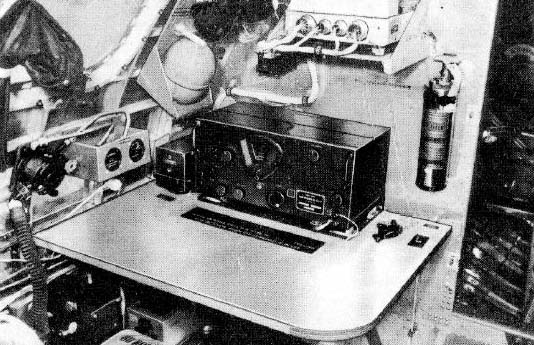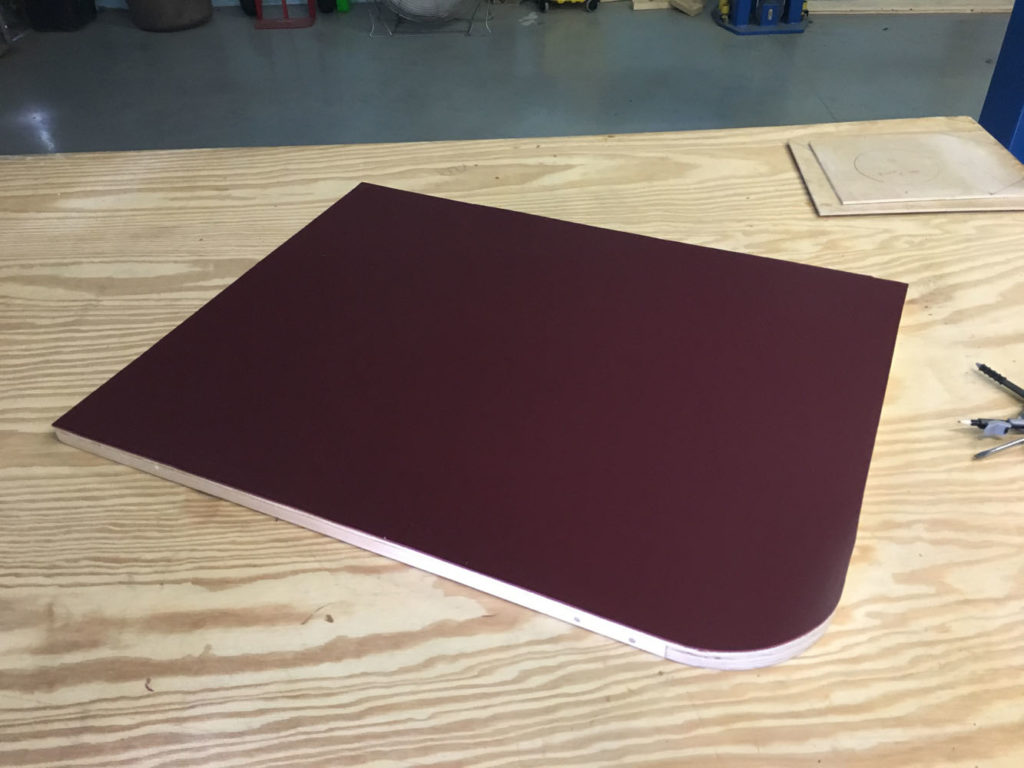
Top and bottom views of Lucky Thirteen‘s new radio operator’s table.
When I started working with Ray on Lucky Thirteen, I began by building various wooden components. You see, I come from a long line of carpenters. My dad and his brothers are master carpenters, the next generation following my grandmother’s brothers, of whom almost all were carpenters. I cannot say I am a master carpenter, but at least I have a family of them I can call on for advice. There’s still a lot of wood-working to do on Lucky Thirteen, but this is one of the most visible pieces I have finished thus far.
One of the most surprising things I have discovered in the B-17’s woodwork is the amount of clever ways Boeing devised to save weight and material. Rather than a solid piece of wood, the radio operator’s table actually consists of over a dozen pieces. With all three B-17 factories being located on the West coast during the war, the woods used are decidedly not local for us in the Carolinas: the top is birch, the stiffeners are spruce, and the rounded corner is Douglas fir. All are glued into place with drilled-in dowels to strengthen the joints. These are the exact materials and methods called for in the blueprints.

A radio operator’s table as shown in a B-17G manual.
The vast majority of professional-quality photos taken during strategic operations against Europe were made in late-1942/early-1943. While this is understandable, considering that the air war was still new and exciting to the American public, this is also problematic. The radio table is a good example of this:
One of the materials called for in the blueprints is a layer of Armstrong “terra cotta” linoleum. Duly noting this info, I researched the linoleum only to find that Armstrong, still in business, no longer carried the color. I managed to find a sample book from 1947 which contained a snippet of Armstrong “terra cotta.” Using this, I was able to color-match the sample to a line currently sold by the Johnsonite Company. To our surprise, Emma Malta – Johnsonite’s representative in the Carolinas – donated a large roll of this material.
It was exactly what the blueprints called for, but it was not correct for Lucky Thirteen. My mistake.
You see, each blueprint covers multiple variants on the same page. Lucky Thirteen was from Block-65 of Douglas Aircraft, which is roughly equivalent to Block-110 of Boeing; the linoleum-topped tables ceased with Block-27. And even then, the linoleum-topped tables had metal edging.

The radio operator’s compartment in an early-B-17F.
Thoroughly embarrassed, a large amount of linoleum was donated to the National Museum of the US Air Force. The team there used it to confirm that they had located Memphis Belle‘s original table (the colors matched).
Emma was very understanding throughout all of this and her team was delighted to hear that the linoleum is being put to good use. Before donating, I couldn’t help but top my spare radio table with the linoleum – it looks amazing!
As they say: measure twice, cut once.

